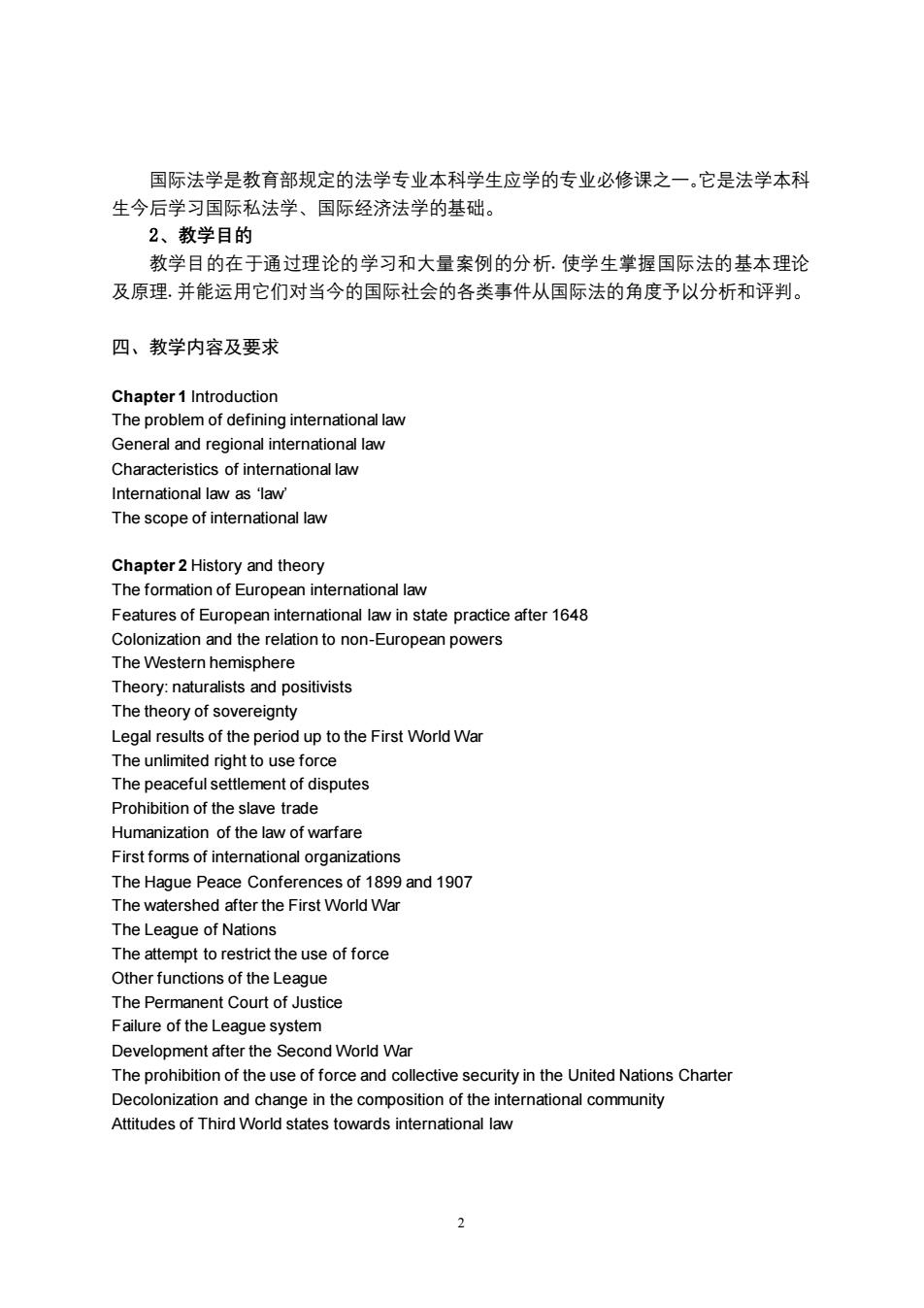正在加载图片...

国际法学是教育部规定的法学专业本科学生应学的专业必修课之一。它是法学本科 生今后学习国际私法学、国际经济法学的基础。 2、教学目的 教学目的在于通过理论的学习和大量案例的分析.使学生掌握国际法的基本理论 及原理,并能运用它们对当今的国际社会的各类事件从国际法的角度予以分析和评判。 四、教学内容及要求 Chapter1 Introduction The problem of defining international law General and regional international law Characteristics of international law Chapter 2 History and theory The formation of European international law Features of Europear lw in state practice Coonizaonandheelaiontonon-EUropeanpoers The Western hemisphere Theory:naturalists and positivists The theory of sovereignty The use force The peaceful settlement of disputes Prohibition of the slave trade Humanization of the law of warfare First forms of international organizations s of 1899 and 1907 after the First Wo rld Wa The League of Nations The attempt to restrict the use of force Other functions of the Leaque The permanent court of Justice Failure of the Le system Development after the Second World War The prohibition of the use of force and collective security in the United Nations Charter Decolonization and change in the composition of the international community Attitudes of Third World states towards international law2 国际法学是教育部规定的法学专业本科学生应学的专业必修课之一。它是法学本科 生今后学习国际私法学、国际经济法学的基础。 2、教学目的 教学目的在于通过理论的学习和大量案例的分析.使学生掌握国际法的基本理论 及原理.并能运用它们对当今的国际社会的各类事件从国际法的角度予以分析和评判。 四、教学内容及要求 Chapter 1 Introduction The problem of defining international law General and regional international law Characteristics of international law International law as ‘law’ The scope of international law Chapter 2 History and theory The formation of European international law Features of European international law in state practice after 1648 Colonization and the relation to non-European powers The Western hemisphere Theory: naturalists and positivists The theory of sovereignty Legal results of the period up to the First World War The unlimited right to use force The peaceful settlement of disputes Prohibition of the slave trade Humanization of the law of warfare First forms of international organizations The Hague Peace Conferences of 1899 and 1907 The watershed after the First World War The League of Nations The attempt to restrict the use of force Other functions of the League The Permanent Court of Justice Failure of the League system Development after the Second World War The prohibition of the use of force and collective security in the United Nations Charter Decolonization and change in the composition of the international community Attitudes of Third World states towards international law